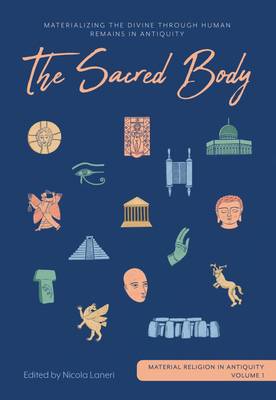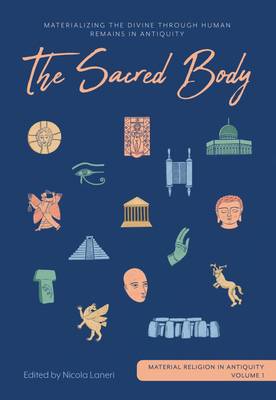
- Afhalen na 1 uur in een winkel met voorraad
- Gratis thuislevering in België vanaf € 30
- Ruim aanbod met 7 miljoen producten
- Afhalen na 1 uur in een winkel met voorraad
- Gratis thuislevering in België vanaf € 30
- Ruim aanbod met 7 miljoen producten
Zoeken
The Sacred Body
Materializing the Divine Through Human Remains in Antiquity
€ 83,95
+ 167 punten
Omschrijving
The human body serves as a symbolic bridge between communities of the living and the divine. This is clearly evident in mythological stories that recount the creation of humans by deities within ancient and contemporaneous societies across a very broad geographical environment.
In certain circumstances, parts of selected humans can become an ideal proxy for connecting with the supernatural, as demonstrated by the cult of human skulls in Near Eastern Neolithic communities, as well as the cult of relics of Christian saints from the early Christian era.
To go deeper into this topic, this volume aims to undertake a cross-cultural investigation of the role played by both humans and human remains in creating forms of relationality with the divine in antiquity. Such an approach will highlight how the human body can be envisioned as part of a broader materialization of religious beliefs that is based on connecting different realms of materiality in the perception of the supernatural by communities of the living.
In certain circumstances, parts of selected humans can become an ideal proxy for connecting with the supernatural, as demonstrated by the cult of human skulls in Near Eastern Neolithic communities, as well as the cult of relics of Christian saints from the early Christian era.
To go deeper into this topic, this volume aims to undertake a cross-cultural investigation of the role played by both humans and human remains in creating forms of relationality with the divine in antiquity. Such an approach will highlight how the human body can be envisioned as part of a broader materialization of religious beliefs that is based on connecting different realms of materiality in the perception of the supernatural by communities of the living.
Specificaties
Betrokkenen
- Uitgeverij:
Inhoud
- Aantal bladzijden:
- 160
- Taal:
- Engels
- Reeks:
Eigenschappen
- Productcode (EAN):
- 9781789255188
- Verschijningsdatum:
- 14/06/2021
- Uitvoering:
- Hardcover
- Formaat:
- Genaaid
- Afmetingen:
- 173 mm x 241 mm
- Gewicht:
- 566 g

Alleen bij Standaard Boekhandel
+ 167 punten op je klantenkaart van Standaard Boekhandel
Beoordelingen
We publiceren alleen reviews die voldoen aan de voorwaarden voor reviews. Bekijk onze voorwaarden voor reviews.










